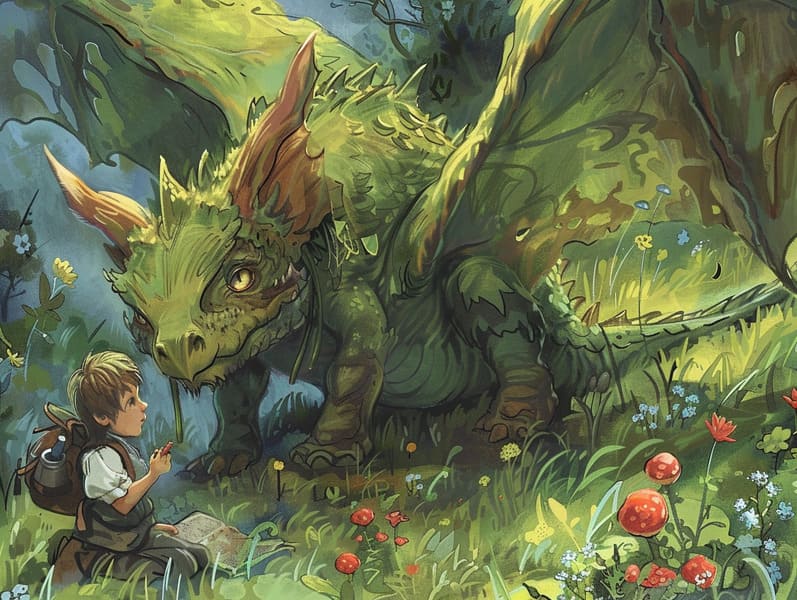
Classic fairy tales have deep roots. These stories have been narrated from one generation to the next centuries before they were ever written down. They originated from a variety of backgrounds, including European traditions. They were initially conveyed among grown-ups, often carrying themes and messages reflective of the societal norms and beliefs of the time.
Jacob and Wilhelm Grimm, Jacob and Wilhelm (the Grimm brothers), were among the first to collect and release many of these beloved fairy tales. Their collection, "Grimm's Fairy Stories," included stories like "The Story of Cinderella," "The Story of Hansel and Gretel," and "Snow White," which have since become cornerstones in the world of classic fairy tales. Similarly, Hans Christian Andersen's magical fairy tales, such as "The Mermaid," and "The Duckling that Could," have enchanted hearts worldwide, securing their place in the pantheon of classic fairy tales.
Despite their historical roots, classic fairy tales remain as meaningful as ever, especially as nighttime stories for kids. These enchanting tales are now available in multiple formats, including beautifully illustrated books, whimsical animations, and online storybooks.
Their continued relevance can be ascribed to several magical reasons:
Key Lessons: Timeless fairy tales often offer important moral lessons. Fairy tales like "The Boy Who Cried Wolf" teach the virtue of being truthful, while "The Hare and the Tortoise" highlight the virtues of determination and humbleness. These tales offer children clear distinctions between correct and incorrect, building their moral compass in a tender yet lasting way.
Empathy and Awareness: Ancient fairy tales frequently present heroines facing problems and hurdles, provoking audiences to sympathize with their struggles and cheer for their triumphs. For instance, "Beauty's Beast" reveals the benefit of looking past the exterior to realize the inner spirit of a individual, fostering awareness and discernment.
Cultural Perception: Many old fairy tales are steeped in the cultural contexts from which they grew. Engaging with these fairy tales can provide illuminating insights into different heritages, strengthening a sense of world understanding and understanding.
Inventiveness and Fantasy: The supernatural elements in fairy tales—spells and potions—foster children’s visions. These narratives lead readers to mythical realms, revitalizing creative dreams and a sense of mystery that persists a lifetime.
Timeless fairy tales are not only entrancing but also pedagogical. They act as mesmerizing tools in strengthening various brain and heart skills in the young. When timeless fairy tales are recited, they foster language proficiency by showing new lexicon and intricate sentence structures. This practice also strengthens listening skills and attentiveness, as children follow the story, anxious to see what happens next.
Furthermore, contemplating the themes and characters of ancient fairy tales can nurture evaluative skills and analytical skills. Children are taught to detect patterns, make predictions, and grasp cause and effect. These examinations also promote young ones verbalize their thoughts and feelings, fostering their emotional intelligence.
In today’s digital age, the proliferation of internet fairy tales has made these narratives more accessible than ever. Internet resources and digital apps feature wide arrays of famous fairy tales that can be viewed or listened via anytime, anywhere. Fairy tales spoken are particularly sought after, extending an immersive method for children to enjoy these fascinating tales. Narrated books and spoken videos take characters and settings to life, often joined by mesmerizing sound effects and tunes that amplify the tale journey.
The enduring charm of ancient fairy tales lies in their ability to transform to modern days while keeping hold of their core messages. Contemporary takes of these narratives often bring in more different figures and modern settings, making them pertinent to today’s audience. However, the essential messages of valour, humanity, and lawfulness remain unchanged, continuing to move audiences of all ages.
Ancient fairy tales also offer a sense of warmth and homeliness. They offer a methodical narrative with a transparent beginning, middle, and end, often coming to a close with the wrap-up of conflicts and the triumph of righteousness over wickedness. This consistency can awesome site be calming for young readers, granting a sense of sturdiness in an ever-changing world.
Traditional fairy tales continue to mesmerize and train new generations, maintaining their elegance and relevance in modern society. As bedtime stories for kids, they impart a perfect blend of allure and teaching, enriching moral values, empathy, and creativity. The accessibility of free fairy tales online and the popularity of fairy tales voiced secure that these old stories remain within reach to new generations.
By preserving and divulging these fairy tales, we continue to revere the rich tapestry of storytelling and cultural heritage. Whether you are delving into a vibrantly illustrated book, discovering a virtual collection, or listening to an audio story, the elegance of traditional fairy tales is always within reach. These tales illustrate of the lasting strength of storytelling and its ability to bring us together across epochs and places.
No matter if you are perusing a artistically illustrated book, browsing a online collection, or playing an narrated book, the magic of traditional fairy tales is always within reach.
These stories convey of the perpetual impact of storytelling and its ability to link us across generations and cultures, making a tie that enchants and educates alike.